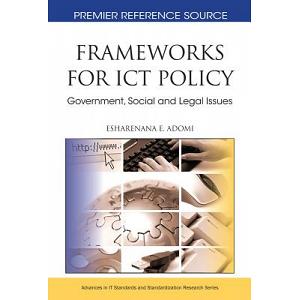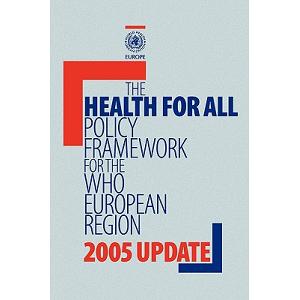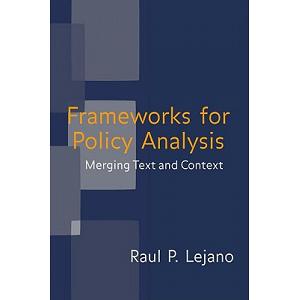Policy Justification Framework: Understanding the Gostin Framework
The five-step Gostin framework provides a structured approach to evaluating public health policies. It focuses on problem identification, effectiveness, cost-benefit analysis, impact on rights and interests, and equity.
The Five Steps of
the Gostin Framework:
- Problem
identification: Clearly defining the public health issue the policy
aims to address.
- Effectiveness:
Evaluating whether the policy is likely to achieve its intended goals.
- Cost-benefit
analysis: Weighing the economic costs of the policy against its
potential benefits.
- Impact
on rights and interests: Assessing the policy's implications for
individual rights, freedoms, and burdens.
- Equity:
Examining how the policy affects different groups within the population
and whether it distributes benefits and burdens fairly.
By systematically considering these factors, policymakers
can make more informed decisions about public health interventions.
Step 1 The policy
addresses a significant risk related to the problem, based on objective science
(is there a problem?)
Step 2
Intervention effectiveness by showing a reasonable fit between means and ends
(will it work?)
Step 3 Economic
costs are reasonable when compared with probable benefits (is it worth the
costs?)
Step 4 Human
rights burdens are reasonable when compared with probable benefits (benefits
outweigh burdens)
Step 5 Benefits,
costs, and burdens from policy and its implementation are fairly distributed
(benefits and costs/burdens are fairly borne by different policy target groups)
Is this policy
justified? Do you support it?
The Gostin Framework is not limited to public health
policy. While it was initially developed with a focus on public health
issues, its core principles of problem identification, effectiveness,
cost-benefit analysis, impact on rights and interests, and equity are
applicable to a wide range of policy areas.
The framework's versatility stems from its focus on a systematic and comprehensive evaluation process. By applying these principles, policymakers can assess the merits and potential drawbacks of policies in sectors such as:
- Economics:
taxation, trade, industrial regulations
- Environment:
climate change mitigation, pollution control, resource management
- Social
policy: education, housing, welfare programs
- Technology:
artificial intelligence, cybersecurity, digital privacy
Essentially, any policy that impacts individuals, society,
or the environment can benefit from the structured approach offered by the
Gostin Framework.
The Gostin framework is designed to be applied to a single,
specific policy because the details of policy matter. It doesn’t work when
applied to a general or vague set of policies. For example, the framework doesn’t
work when applied to something vague like education policy to address learning
loss during COVID. It does not work when applied to a general policy area or a
set of related policies (like immigration reform, gun control, or obesity prevention
policy) because these broad areas encompass a variety of different
strategies. So pick one clear, very specific policy to analyze with this
framework.
The key questions that the framework helps to answer include:
1.How should public policy professionals approach designing and justifying policies that intrude upon markets and or the interests of individuals.
2.How should public policy professionals go about making
claims about what constitutes good versus bad? Public policy or policy you can
support or you oppose.
This structured approach allows for a comprehensive
evaluation of the policy from various angles, ensuring that all relevant
aspects are considered systematically and methodically.
The framework helps you to take a moment to think
systematically and methodically about the policy from multiple different angles
and perspectives. The framework includes steps such as:
- Problem
Identification: Ensuring that the policy addresses a significant risk
related to the problem, based on objective science.
- Intervention
Effectiveness: Evaluating whether the policy's means (integration and
standardization of data) are effective in achieving its ends (improved
data quality and accessibility).
- Economic
Costs: Assessing whether the economic costs of implementing the policy
are reasonable compared to its probable benefits.
- Human
Rights Burdens: Ensuring that the human rights burdens associated with
the policy are reasonable compared to its probable benefits.
- Fair
Distribution: Evaluating whether the benefits, costs, and burdens from
the policy and its implementation are fairly distributed among different
policy target groups.
The framework helps public policy professionals approach
designing and justifying policies that intrude upon markets and the interests
of individuals by systematically evaluating the policy's impact and
implications. Here’s how the framework can be applied:
Step 1: The policy addresses a significant risk related to the problem, based on objective science (is there a problem?)
- Problem
Identification: Public policy professionals must identify a
significant risk or problem that the policy aims to address. This could be
market failures, externalities, or other issues that affect the interests
of individuals.
- Objective
Science: The problem must be grounded in objective science and
evidence. For example, a policy to regulate the market to prevent
monopolies should be based on data showing the negative impacts of
monopolies on competition and consumer welfare.
Step 2: Intervention effectiveness by showing a reasonable
fit between means and ends (will it work?)
- Means:
The policy must have clear and effective means to address the problem. For
instance, a policy to regulate the market might involve setting clear
guidelines, monitoring compliance, and enforcing penalties for
non-compliance.
- Ends:
The policy should aim to achieve specific, measurable, and achievable
ends. For example, reducing market concentration, increasing competition,
and improving consumer welfare.
- Reasonable
Fit: The means should be designed to achieve the ends effectively. A
policy that aims to reduce market concentration through mergers and
acquisitions regulations should have mechanisms in place to monitor and
enforce these regulations.
Step 3: Economic costs are reasonable when compared with
probable benefits (is it worth the costs?)
- Economic
Costs: The policy must consider the economic costs of implementation,
including any potential negative impacts on businesses or consumers.
- Probable
Benefits: The benefits of the policy should outweigh the costs. For
example, a policy to regulate the market to prevent monopolies might
require significant investment in regulatory bodies and enforcement
mechanisms, but the benefits of increased competition and consumer welfare
should justify these costs.
Step 4: Human rights burdens are reasonable when compared
with probable benefits (benefits outweigh burdens)
- Human
Rights Burdens: The policy must consider any potential human rights
burdens, such as restrictions on individual freedoms or privacy concerns.
- Probable
Benefits: The benefits of the policy should outweigh any human rights
burdens. For example, a policy to regulate data privacy might impose some
restrictions on businesses, but these should be justified by the benefits
of protecting individual privacy.
Step 5: Benefits, costs, and burdens from policy and its
implementation are fairly distributed (benefits and costs/burdens are fairly
borne by different policy target groups)
- Benefit
Distribution: The benefits of the policy should be distributed fairly
among different stakeholders. For example, a policy to regulate the market
to prevent monopolies should benefit consumers and small businesses.
- Cost
Distribution: The costs of the policy should be distributed fairly
among different stakeholders. For example, the costs of implementing and
enforcing regulations might be borne by businesses, but these costs should
be proportionate to the benefits gained.
- Burden
Distribution: The burdens of the policy should be distributed fairly
among different stakeholders. For example, the burden of compliance with
regulations should not disproportionately affect small businesses or
individuals.
Conclusion
The framework helps public policy professionals design and
justify policies that intrude upon markets and the interests of individuals by
ensuring that:
- The
policy addresses a significant problem based on objective science.
- The
intervention is effective in achieving its ends.
- The
economic costs are reasonable compared to the probable benefits.
- The
human rights burdens are reasonable compared to the probable benefits.
- The
benefits, costs, and burdens are fairly distributed among different policy
target groups.
This systematic approach ensures that policies are designed
with careful consideration of their impact and implications, thereby helping to
justify their implementation.
Example Applications:
For instance, if a policy aims to regulate the market to
prevent monopolies, the framework would help evaluate:
- Problem
Identification: Is there a significant risk of market concentration
that affects consumer welfare?
- Intervention
Effectiveness: Will the regulation effectively reduce market
concentration and increase competition?
- Economic
Costs: Are the costs of implementing and enforcing the regulation
reasonable compared to the probable benefits?
- Human
Rights Burdens: Are any human rights burdens associated with the
regulation reasonable compared to the probable benefits?
- Fair
Distribution: Are the benefits, costs, and burdens of the regulation
fairly distributed among different stakeholders?
By answering these questions systematically, public policy professionals can make informed decisions about whether to support or oppose the policy.
Another single clear policy in Indonesia related to finance
is the "Financial Services Sector Master Plan 2021-2025" (MPSJKI)
issued by the Otoritas Jasa Keuangan (OJK). This policy aims to enhance the
resilience and competitiveness of Indonesia's financial services sector. It
outlines future policy directions and strategies to achieve these goals,
including improving the regulatory environment, enhancing financial inclusion,
and promoting sustainable finance.
Key Features of the Financial Services Sector Master Plan
2021-2025:
- Regulatory
Environment: Streamlining regulations to improve the ease of doing
business and attract foreign investment.
- Financial
Inclusion: Increasing access to financial services for underserved
populations through digital financial innovations.
- Sustainable
Finance: Promoting sustainable finance practices aligned with the
United Nations' Sustainable Development Goals (SDGs).
- Risk
Management: Enhancing risk management frameworks to ensure financial
stability.
- Capacity
Building: Improving the capacity of financial institutions and
regulatory bodies to implement these policies effectively.
Steps to Apply the Policy Justification Framework to the
Financial Services Sector Master Plan:
- Problem
Identification: The policy addresses the problem of inadequate
financial inclusion and regulatory complexity in the financial sector.
- Intervention
Effectiveness: The policy's means (regulatory reforms, digital
innovations, and capacity building) are designed to achieve the ends
(enhanced financial inclusion and regulatory efficiency).
- Economic
Costs: The costs of implementing these reforms are reasonable compared
to the probable benefits of improved financial stability and increased
access to financial services.
- Human
Rights Burdens: The policy respects human rights by ensuring access to
financial services, which is essential for economic empowerment.
- Fair
Distribution: The benefits of improved financial inclusion and
regulatory efficiency are fairly distributed among different stakeholders,
including consumers and financial institutions.
Conclusion
The Financial Services Sector Master Plan 2021-2025 is a
clear policy that addresses significant risks related to financial inclusion
and regulatory complexity, has a reasonable fit between means and ends, is
economically reasonable, respects human rights, and distributes benefits and
costs fairly. This policy serves as a model for other countries to follow in
enhancing their financial sectors.
There is a single clear policy relating to public health in
Indonesia. The "Health Law No. 17 of 2023" is a comprehensive policy
that addresses various aspects of the health system in Indonesia. This law was
enacted following the Indonesian Health Transformation Plan and encompasses six
key pillars: primary health care, referral health care, health resilience,
health financing, human resources, and health technology. The law merges and
amends 13 existing health-related laws into a single 458-article law, aiming to
formalize commitments and goals, establish the fundamental aspects of the
health system architecture, and facilitate multisector cooperation to achieve
health system goals.
Key Features of the Health Law No. 17 of 2023:
- Transformation
of Primary and Referral Health Care: Enhancing the quality and
accessibility of primary and referral health care services.
- Health
Resilience: Strengthening the health system to respond to emerging
health threats and crises.
- Health
Financing: Improving the financing mechanisms for health services,
including insurance coverage and financial protection for vulnerable
populations.
- Human
Resources: Ensuring adequate and skilled human resources in the health
sector.
- Health
Technology: Promoting the use of technology to enhance health service
delivery and management.
Steps to Apply the Policy Justification Framework to the
Health Law No. 17 of 2023:
- Problem
Identification: The law addresses significant problems in the
Indonesian health system, including disparities in healthcare access and
workforce distribution.
- Intervention
Effectiveness: The law's provisions are designed to achieve the
transformation of the health system, improve health resilience, and
enhance human resources.
- Economic
Costs: The costs of implementing the law are reasonable compared to
the probable benefits of improved health outcomes and system efficiency.
- Human
Rights Burdens: The law respects human rights by ensuring access to
essential health services and protecting vulnerable populations.
- Fair
Distribution: The benefits of improved health services and system
efficiency are fairly distributed among different stakeholders, including
citizens and healthcare providers.
Conclusion
The Health Law No. 17 of 2023 is a clear policy that
addresses significant risks related to the health system, has a reasonable fit
between means and ends, is economically reasonable, respects human rights, and
distributes benefits and costs fairly. This policy serves as a model for other
countries to follow in enhancing their public health systems.
Another policy, The specific policy being analyzed is the
"One Data Indonesia" policy. This policy aims to integrate and
standardize data across different government agencies and levels, ensuring that
the data is accurate, up-to-date, integrated, accountable, accessible, and shareable.
The policy was introduced through Presidential Regulation No. 39 of 2019 and is
part of Indonesia's efforts to enhance transparency and accountability in
governance.
Key Features of the One Data Indonesia Policy:
- Data
Integration: Harmonizing data obtained by each ministry and agency to
ensure consistency and accuracy.
- Data
Governance: Establishing a regulatory framework for data management,
including data standards, metadata, and interoperability.
- Data
Security: Ensuring the security of data to prevent misuse and
unauthorized access.
- Public
Access: Making data accessible to the public to promote transparency
and accountability.
- Implementation:
The policy involves the preparation of local action plans at the
sub-national level, involving civil society organizations and regional
governments.
Steps to Apply the Policy Justification Framework to the One
Data Indonesia Policy:
- Problem
Identification: The policy addresses the problem of fragmented and
inconsistent data across government agencies, which hinders effective
governance and development programs.
- Intervention
Effectiveness: The policy aims to achieve effective data integration
and governance, which is essential for targeted policy-making and public
participation.
- Economic
Costs: The costs of implementing the policy include investments in
digital infrastructure and training personnel, which are reasonable
compared to the benefits of improved data management.
- Human
Rights Burdens: The policy respects human rights by ensuring access to
information and protecting privacy through robust data security measures.
- Fair
Distribution: The benefits of improved data management and governance
are distributed fairly among different stakeholders, including citizens
and government agencies.
Conclusion
The One Data Indonesia policy is a clear and comprehensive
initiative that addresses significant risks related to data fragmentation, has
a reasonable fit between means and ends, is economically reasonable, respects
human rights, and distributes benefits and costs fairly. This policy supports
open government values, enhances transparency and accountability, and aligns
with Indonesia's Medium-Term National Development Plan (RPJMN) and Sustainable
Development Goals (SDGs).
Last but not least, JKN (Jaminan Kesehatan Nasional) is a
clear single policy aimed at achieving universal health coverage in Indonesia.
It is managed by the Social Security Administering Body for Health (BPJS-K) and
is designed to provide comprehensive health insurance coverage to the majority
of the population. The policy includes a wide range of health services such as
curative care, prescribed medicines, accommodation for inpatient care, and
ambulance services, while excluding services like cosmetics, accidents caused
by hobbies, and traditional medicines. JKN has been instrumental in
reducing out-of-pocket payments and increasing the utilization of healthcare
services, particularly among the poor and vulnerable populations
Policy Justification Framework: Steps
Step 1: The policy addresses a significant risk related to
the problem, based on objective science (is there a problem?)
Problem Identification:
- Healthcare
Access: Indonesia's healthcare system faced significant
challenges in providing universal access to healthcare, particularly for
the poor and vulnerable.
- Healthcare
Quality: The quality of healthcare services was inconsistent,
with a high reliance on hospital care rather than primary healthcare.
- Financial
Sustainability: The JKN scheme incurred increasing deficits each
year, posing a financial sustainability risk.
Step 2: Intervention effectiveness by showing a reasonable
fit between means and ends (will it work?)
Policy Intervention:
- Universal
Health Coverage: JKN aims to provide universal health insurance
coverage, ensuring that the majority of the population has access to
healthcare.
- Primary
Healthcare Strengthening: Strategies include increasing
capitation rates, reallocating patients more equitably, and implementing
performance-based measures to enhance primary healthcare utilization.
- Deficit
Management: Annual deficit funding projections and robust
financial planning are implemented to manage future deficits.
Step 3: Economic costs are reasonable when compared with
probable benefits (is it worth the costs?)
Economic Analysis:
- Costs: Implementing
and maintaining JKN involves significant financial investments, including
annual deficit funding.
- Benefits: The
benefits include improved healthcare access, reduced out-of-pocket
expenses for the population, and enhanced health outcomes.
- Cost-Benefit
Analysis: The economic costs are reasonable when compared to the
probable benefits of improved health outcomes and increased access to
healthcare.
Step 4: Human rights burdens are reasonable when compared
with probable benefits (benefits outweigh burdens)
Human Rights Consideration:
- Health
as a Right: Ensuring universal access to healthcare is a
fundamental human right, and JKN's implementation aligns with this
principle.
- Burden
Distribution: The benefits of JKN are distributed fairly across
the population, with a focus on the most vulnerable groups.
Step 5: Benefits, costs, and burdens from policy and its
implementation are fairly distributed (benefits and costs/burdens are fairly
borne by different policy target groups)
Distribution of Benefits and Costs:
- Population
Coverage: JKN covers approximately 83% of the population,
ensuring that the benefits of improved healthcare access are widely
distributed.
- Financial
Burden: The financial burden of implementing and maintaining JKN
is shared among the government, healthcare providers, and the insured
population.
- Fair
Distribution: The policy ensures that the costs and benefits are
fairly distributed among different policy target groups, including the
poor and vulnerable.
Conclusion
Summary of Rationale
The JKN policy is justified and supported based on a
comprehensive analysis using the Gostin framework. Firstly, the policy
addresses significant risks in Indonesia’s healthcare system, including limited
access to healthcare, inconsistent quality, and financial sustainability
issues. Secondly, the intervention is effective in strengthening primary
healthcare, managing deficits, and ensuring universal coverage. Thirdly, the
economic costs are reasonable when compared to the probable benefits of
improved health outcomes and increased access to healthcare. Fourthly, the
policy respects human rights by ensuring access to healthcare as a fundamental
right and distributes the costs and benefits fairly among the population. Lastly,
the benefits, costs, and burdens are fairly distributed among different policy
target groups, including the poor and vulnerable. These points collectively
demonstrate that the JKN policy is a well-justified and effective intervention
aimed at improving Indonesia’s healthcare system, thereby enhancing the
well-being of its citizens.
Is JKN justified? Do you support it? From a public
health perspective, JKN is a step in the right direction towards achieving
universal health coverage and improving population health. However, the program
requires ongoing evaluation and improvement to address its challenges and
ensure that the benefits outweigh the burdens.
Some factors to consider when forming opinion about JKN:
Factors supporting JKN:
- Increased
access to healthcare: JKN has the potential to expand healthcare
coverage to a significant portion of the population, reducing disparities.
- Financial
protection: It can protect individuals from catastrophic healthcare
costs.
- Potential
for improved health outcomes: With increased access to care,
preventive services, and treatment, overall population health can improve.
Factors opposing JKN:
- Financial
sustainability: JKN faces challenges in maintaining financial
viability due to rising healthcare costs.
- Quality
of care: Ensuring consistent and high-quality care for all
beneficiaries is a complex issue.
- Administrative
burden: The program involves significant administrative complexities.
Ultimately, whether or not to support JKN is a complex
decision that depends on individual values and priorities. It's essential to
weigh the potential benefits against the challenges and consider the long-term
implications of the policy.
Overall, while JKN
has potential, its success depends on effective implementation, adequate funding,
and continuous monitoring of its impact.
The ability to consider multiple perspectives, including
policy framing, effectiveness, economic efficiency, ethics, and fairness, is
essential for crafting sound and equitable policies.
By incorporating these elements into the decision-making
process, policymakers can:
- Enhance
policy clarity and coherence: A well-framed policy is more likely to
resonate with the public and garner support.
- Optimize
resource allocation: Considering economic efficiency helps maximize
the benefits of a policy while minimizing costs.
- Ensure
ethical considerations: Upholding values of fairness and justice is
crucial for public trust and legitimacy.
Source: cousera





No comments:
Post a Comment